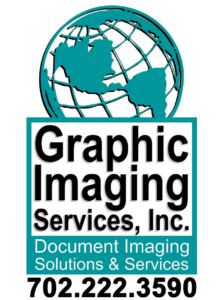Recommended Workflow for Large Format Scanning

A workflow process is the automation of a business process that can be fully automated or simply part of the automated process.
So many times, we jump into the process because it seems so simple. Until you get into the groove and actually use the data, many of us don’t really understand our own needs. With the large format documents, there are the obvious steps and then there are those we tend to overlook.
Key Factors
Because of a recent project, I wanted to remind everyone of the key factors in incorporating AEC records into a Records Management System. The consist of the following steps
- Selection
- Prepping
- Scanning
- Quality Assurance
- Indexing
- Quality Assurance
- Import to Database for use in Software application
Selection is assumed. Make sure we know what that means. Is it the items in an office, the boxes in storage or both? Who decides?. Is there a priority?
The Steps
Prepping
The selected items is next. It is an obvious step to getting drawings ready for scanning. However, there could be many steps required to prep a large format drawing. Storage in a warehouse means there is dust, lots of dust. Vacuuming is step one. Unrolling or unfolding is step two in this step of the workflow. You will need at least 48 hour to get the drawings rolled tight to not curl during scanning. Bring a pair of Craftsman pliers to pull the industrial staple out and don’t forget the ones in the middle of the page.
Tape one edge and areas that will catch during scanning. I see organizations prep drawings that are in poor quality excessively. Remember, you usually only need one straight edge to get it through the scanner. As long as it doesn’t tear while scanning you should be good. Also incorporate a unique identifier. This effort also helps identify duplicates and maintains a unique identifier to reference.
Scanning
This seems pretty obvious but remembers recommendations include 300 x 300 dpi resolution to a TIF, JPG or PDF File. Single page or multi-page. Stay Single if you can. Monochrome or Color – Color when needed.
Quality Assurance
Why do people think that Quality assurance is watching the scan on the computer? That’s not Quality Assurance. So often this component is not included in the workflow and it’s important to include this step in your workflow. There is an assumption that because you scan one drawing at a time (no ADF’s here) that you are verifying the quality. Unfortunately, we find drawings that are cut off, de-skewed, need rotation or are not scanned at the right setting. Because there was an image, it is assumed the scan is good. What happens is that after it has been processed for indexing or imported into a system that the image is bad or cut off and you have re-scan. Can you even find the original to re-scan it?
Please consider those down the road who will use this data. It can become very cumbersome to address drawings that are not rotated or because they were not set at the right margins, some of the content is cut off.
Indexing
Forms processing does NOT exist for large format document documents. The information is never in the same location. Title blocks are unique to each company, and there are revision dates are in various locations as well. Make sure that data entry does not transfer the spelling errors and punctuation. Establish standards as part of Best Practices for you indexing. You may want to create a document that addresses these issues as they arise so when the next group of people tackle this project they have a point of reference and don’t create a new standard.
These are all important steps in the capture of your large format drawings.

